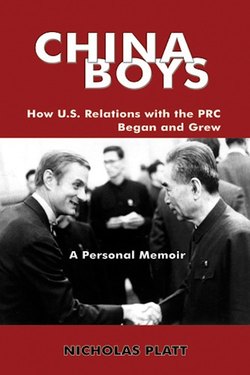Читать книгу CHINA BOYS: How U.S. Relations With the PRC Began and Grew. A Personal Memoir - Nicholas MD Platt - Страница 5
На сайте Литреса книга снята с продажи.
1 Choosing Diplomacy Early Asians
ОглавлениеI met my first Asian at St. Paul’s School in Concord, New Hampshire. A chubby, homesick new boy, who still sang soprano, I reported for football practice on the lowest club team one day in mid-September 1948. Placed with the heavies in the middle of the line, I found myself standing next to a young Asian man, older and smaller than I. We eyed each other warily, both looking ridiculous in the football equipment of the day: leather helmets with drooping doglike earlaps, high-winged shoulder pads, and bulging pants. He announced quietly that he was Ben Makihara from the Seikei High School in Tokyo, then blurted out, “I don’t understand this game at all! I just don’t know what to do.”
“Well, our job here in the middle of the line is to knock people down,” I replied helpfully. “There are three ways to do that. We can just charge straight ahead, or you can lie down on the ground and I can knock someone over you, or I can lie down on the ground and you can knock someone over me.”
“Oh,“ said Ben.
We used all three methods during the season, becoming life-long friends in the process. Makihara went on to become the chief executive officer and chairman of Mitsubishi, one of Japan’s largest conglomerates, and a key figure influencing U.S.-Japan relations. We have joked together since that ours was the real beginning ofU.S.-Japan security cooperation.
Nestled in the New Hampshire countryside, St. Paul’s, a strict, private Episcopalian boarding school patterned after English models, had within three years of Japan’s surrender pioneered an exchange program with Seikei, a counterpart school in Tokyo. Two years later Tatsuo Arima, destined to become a top diplomat, joined my class. We were to work closely almost thirty years later in Washington, where he headed the Political Section of the Japanese embassy in Washington and I was in charge of the Japan desk at the State Department. Together we dealt with the problems of the day, boasting that the class of ’53 at SPS managed U.S.-Japan relations from both sides of the Pacific.
